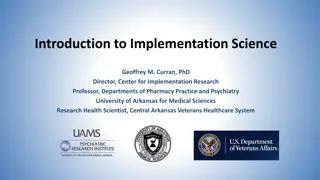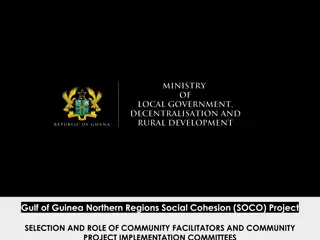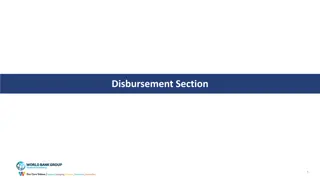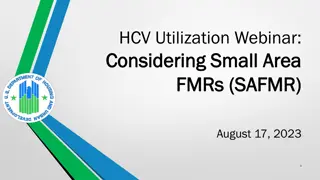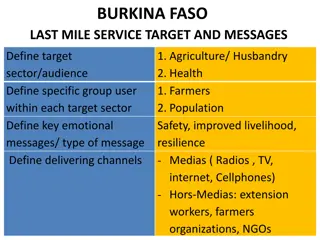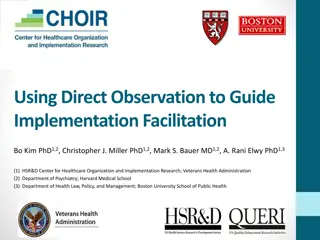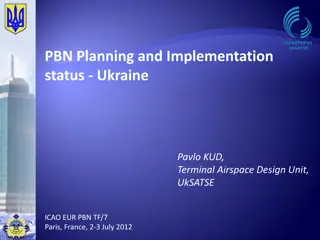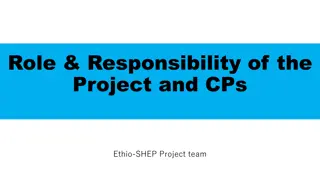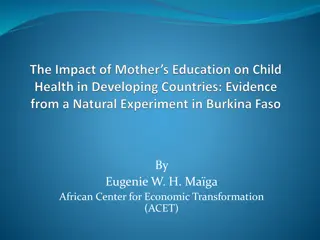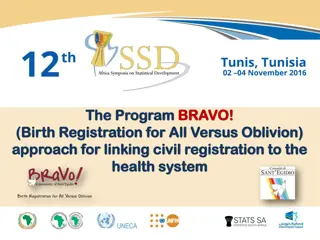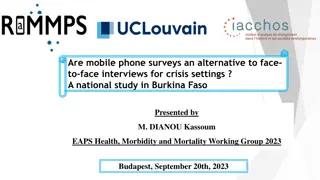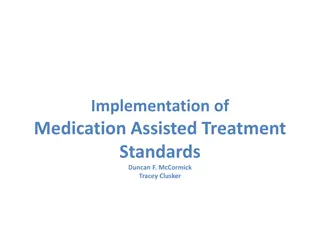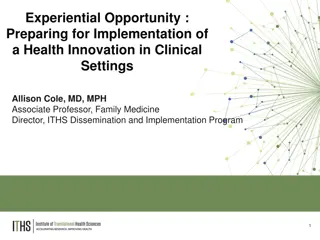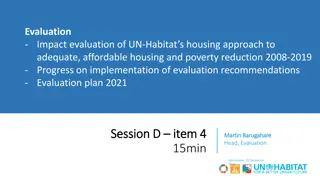Implementation of IPTg-c Approach in Burkina Faso
In Burkina Faso, the IPTg-c approach has shown significant progress in preventing malaria during pregnancy, with coverage increasing from 22% in 2014 to 76.05% in 2020. The initiative involves community-based health workers, training stakeholders, and engaging target communities through advocacy. WHO recommendations, partnerships, and the presence of ASBCs in villages have contributed to the success of IPTg-c in Burkina Faso.
Download Presentation

Please find below an Image/Link to download the presentation.
The content on the website is provided AS IS for your information and personal use only. It may not be sold, licensed, or shared on other websites without obtaining consent from the author.If you encounter any issues during the download, it is possible that the publisher has removed the file from their server.
You are allowed to download the files provided on this website for personal or commercial use, subject to the condition that they are used lawfully. All files are the property of their respective owners.
The content on the website is provided AS IS for your information and personal use only. It may not be sold, licensed, or shared on other websites without obtaining consent from the author.
E N D
Presentation Transcript
Moussa Dadjoari Burkina Faso
INTERMITTENT PREVENTIVE TREATMENT DURING PREGNANCY IN THE COMMUNITY (IPTg-c) BURKINA FASO BURKINA FASO IPTg increased from 22% in 2014 to 76.05% in 2020 Dr Moussa DADJOARI Dr Yacouba NUMBER Dr Fr d ric GUIGMA
Health training CPN1: Pregnant woman Community: Pregnant women 3 malaria + signs TDR* palu- signs TDR- Compliance with guidelines other causes TPIg-c Referred to CSPS TDR/GE SP 2 mehome dose followed by other doses TDR/GE- TDR/GE + - Supervised SP - Tips for other NPCs - MILDA -T1: quinine -T2: ACT -Evaluation then SP
IPTg-c approach in Burkina Faso 3 Districts : Centre-Est region: Ouargaye DS Centre-sud region: DS de Po South-West region: DS of Bati Description of Community IPTg CPN: 1st take at the MSDS Follow-up of other intakes at home Support for ASBCs who store medicines SP supply Data transmission to ICP
Why TPIg-c in Burkina Faso? WHO recommendation: IPTg 3 and above protect pregnant women and children IPTg 3 coverage: 22% (last MIS/2014 survey) before pilot IPTg-c Implemented only by health agents during ANCs Opportunity: ASBC presence in villages Literature review: Nigeria Security context: window of opportunity in BF due to inaccessible areas Availability of partners to support the BF
Stages of IPTg-c in Burkina Faso Baseline assessment-Training of stakeholders-Commitment of target communities through advocacy Consultation meetings followed by planning and drafting of a feasibility study protocol Other departments: DSF, DPES, DSS, DRSHP, DS, FS Duration:approx. 18 months and no extension Choice of 3 DS: low coverage in CPN 1 and TPIg 3
Community-based health workers (1/2) ASBC selection: Priority: women, for reasons of confidentiality and privacy, for the feasibility study. Villages without female CBSAs: recruit additional facilitators and train selected CBSAs in data collection tools. Motivation: 20,000 CFA francs per month (30.39 euros)
Community-based health workers (2/2) The role of ASBCs in TPIg-c Home visits Promoting the benefits of early SPN Identification of pregnant women Referral for ANC 1 and monitoring of compliance with appointments for subsequent ANCs 1st dose: under TDO by the health agent at the ANC Input management Monthly data collection and transmission to ICP
Comparison of TIPg coverage at the Po DS level 9 60 54 53 50 44 42 Coverage in TPI1, 3 and 4 39 38 40 35 30 24 23 20 14 14 11 10 0 Enquete de Base Enquete Finale Enquete de Base Enquete Finale intervention Comparison between TPIg 1, TPIg 3 and TPIg 4 in the DS Po intervention and control zone in 2018 control TPI1 TPI3 TPI4
TPIg 3 administration 10 Number of TPIg 3 administered by group and by quarter from June 2017 to August 2018 in the TPIg-c study 600 500 T*Number of pregnant women 400 188 257 314 265 278 300 384 200 342 332 319 306 286 241 209 204 100 173 0 Q1 In3 Q1 Cn3 Q2 In3 Number of PAs per quarter in the area of intervention and control per quarter in 2018_. Q2 Cn3 Q3 In3 Q3 Cn3 Q4 In3 Q4 Cn3 Q5 In3 Q5 Cn3 CSPS In ASBC CSPS Cn
Monitoring and evaluation of IPTg- c ASBC reports included in monthly ICP reports Completion of tools (forms) is done monthly Referrals of pregnant women to the CSPS (in the ASBC daybook) Extraction of ANC and IPTg data from the Entrep t national de donn es sanitaires du Burkina Faso (Endos-BF) Key point to remember: regular data monitoring
Quality-assured MS Supply: State budget: based on nurses' needs, including those of ASBCs Order: Quantities to cover NPC and Community requirements Storage: In DMEGs but also in bags donated by NGOs Key point to remember: good reporting system
Challenges and mitigation measures Challenges Mitigation strategies Insecurity in some localities Integrated contingency plan Irregular monthly financial motivation for ABCs Strengthening advocacy Extension to other health facilities in a context of insecurity Implementation of the integrated contingency plan Security stability, integration into routine activity packages Making the intervention permanent
Summary Higher TPIg 3 and TPIg 4 coverage at Community level Good attendance at NPC The importance of community awareness Opportunity: ASBC, especially for women ++. The benefits of close monitoring (supervision) and securing MS Regular payment of financial incentives for cardinal ASBCs
THANK THANK YOU! YOU!



